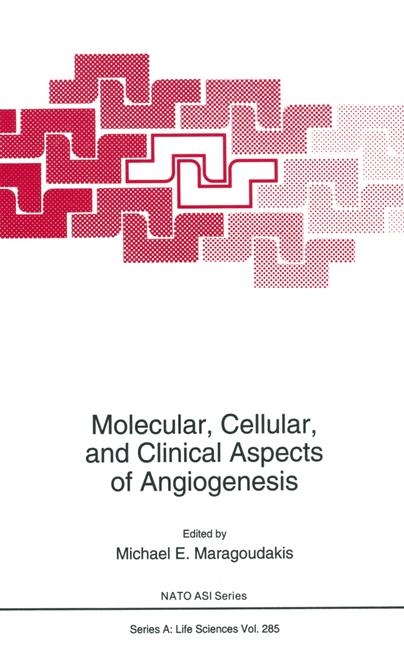
Molecular, Cellular, and Clinical Aspects of Angiogenesis
Kluwer Academic/Plenum Publishers (Verlag)
978-0-306-45315-1 (ISBN)
- Titel ist leider vergriffen;
keine Neuauflage - Artikel merken
There has been an explosion of research activity related to angiogenesis in recent years, and hundreds of laboratories worldwide are actively involved in many aspects of angiogenesiS. The literature on angiogenesis increases exponentially every year, and more than 16,000 peer-reviewed articles have been published the past 25 years, which are scattered in basic science and clinical journals. The complexity of the cascade of events leading to new vessel formation from preexisting ones has challenged scientists in cell biology, biochemistry, physiology, pharmacology, molecular biology, developmental biology, and other fields. With their multidisciplinary approach and the powerful new techniques that have been developed, the progress in understanding angiogenesis has been impressive indeed. Only 12 years ago the mention of an angiogenic factor caused skepticism. Today we have the complete amino-acid fiequence and their genes cloned for at least 9 angiogenic factors. Many laboratories are studying their role in angiogenesis, and several biotechnology firms have a keen interest in commercial developments relative to these molecules. The role of extracellular matrix components in angiogenesis and the interaction of endothelial cells with other cell types such as pericytes, smooth muscle cells, and inflammatory cells have been studied by other groups. This rapid expansion is the result of a realization that in many disease states a common underlying pathology is a derangement in angiogenesis.
Heterogeneity of Endothelial Cells: On the Possible Role of Endothelial Cell Heterogeneity in Angiogenesis; P.I. Lelkes, et al. Role of Extracellular Matrix in Angiogenesis: Plasminogen Activators in Fibrinolysis and Pericellular Proteolysis. Studies on Human Endothelial Cells in vitro; V.W.M. van Hinsbergh, et al. Angiogenic Factors and Their Receptors: Basic Fibroblast Growth Factor Expression in Endothelial Cells: An Autocrine Role in Angiogenesis? A. Gualandris, et al. The Biology of Vascular Endothelial Growth Factor; N. Ferrara. Physiological Angiogenesis: Angiogenesis in the Female Reproductive Organs; L.P. Reynolds, et al. Pathological Angiogenesis: Tumor Oxygenation and Tumor Vascularity: Evidence for Their Clinical Relevance in Cancer of the Uterine Cervix and Considerations on Their Potential Biological Role in Tumor Progression; M. Höckel, et al. Inhibitors of Angiogenesis: A Heparanaseinhibitory, bFGFbinding Sulfated Oligosaccharide That Inhibits Angiogenesis ex ovo Has Potent Antitumor and Antimetastatic Activity in vivo; R.J. Tressler, et al. Biotechnological Aspects of Angiogenesis: A Method for the in vivo Quantitation of Angiogenesis in the Rabbit Corneal Model; R.W. Shaffer, M. Friedlander. 13 additional articles. Index.
| Reihe/Serie | Nato Science Series: A ; 285 |
|---|---|
| Zusatzinfo | 302 p. |
| Verlagsort | New York |
| Sprache | englisch |
| Gewicht | 750 g |
| Themenwelt | Medizin / Pharmazie ► Medizinische Fachgebiete ► Pharmakologie / Pharmakotherapie |
| Medizin / Pharmazie ► Pharmazie | |
| Naturwissenschaften ► Biologie ► Zoologie | |
| ISBN-10 | 0-306-45315-0 / 0306453150 |
| ISBN-13 | 978-0-306-45315-1 / 9780306453151 |
| Zustand | Neuware |
| Haben Sie eine Frage zum Produkt? |
aus dem Bereich


